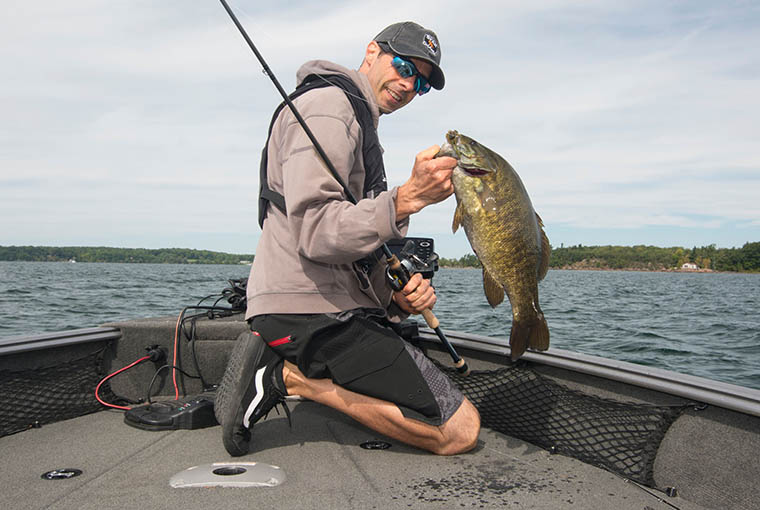
If intelligent life exists elsewhere in the universe, it’s possible these sentient beings have heard about the world-class smallmouth bass fishery within the eastern edge of Lake Ontario and the St. Lawrence River. Heck, they may even be planning an interstellar fly-in trip to wet a line.
Tinfoil-hat topics aside, this fishery currently ranks high on the list — if not at the top — of the greatest smallmouth bass destinations in North America. Its waters attract elite-level tournaments, local derbies, and who knows how many bass-heads from both sides of the Canada-US border, which runs through most of the waterway.
I’m fortunate to reside an hour’s drive from several launches along this incredible smallmouth destination. While its clear waters and the increasing angling pressure can make for occasional tough outings, the area remains one of the best places to catch trophy smallmouth bass for those willing to put in the time.
Smallmouth paradise
Bass habitat abounds throughout the waterway. Smallmouth have their pick of shallow flats, grass beds, pencil reed patches, sunken shipwrecks, flooded roadbeds from another era, bridge pilings, wing dams, rocky points, deep humps, channel swings, and more than 1,000 islands and rock shoals.
Being sight feeders, smallmouth flourish in the system’s clear waters, a byproduct of invasive zebra and quagga mussels. Round gobies, another invasive, can’t be ignored when discussing the areas’ portly smallmouth. Gobies spend their lives darting along bottom and are easy pickings for bronzebacks. Crayfish, yellow perch, alewife, and emerald shiners are just a sampling of other forage contributing to a
smallmouth’s diet.
Fish shallow smallmouth on sunny days
For the shallow game, the biggest tip I can give is to go out on a nice day, said Daiwa pro Chris Johnston of Peterborough, who won the 2020 Bassmaster Elite tournament on the St. Lawrence with a four-day total of 97 pounds, eight ounces. “Sunny weather is ideal for fishing shallow. If it’s overcast, windy, and rainy, you’ll be hard pressed to catch them shallow on the St. Lawrence River.”
Jerkbaits, spinnerbaits, crankbaits, swimbaits, and other reaction lures help cover water and trigger shallow smallmouth. When fish don’t react to speed, anglers can tease bites, using Ned rigs, small tube jigs, spybaits, hairjigs, wacky-rigged stickbaits, and drop-shot rigs. More details below.
Go deeper any other time
“For someone not familiar with the area, fishing out deeper is the easier way to catch them as the shallow ones can be finicky,” Johnston said.
Drifting a drop-shot rig with a 3/8- or 1/2-ounce weight and a finesse worm or minnow on eight to 10-pound fluorocarbon leader is one of the best presentations for bass. Matching the boat’s speed to the current helps the rig stay vertical.
“If you keep the bait straight up and down, you get 10 times as many bites,” Johnston said, “If you cast it out and drag, you’ll get hung up more.”
Johnston notes catching mid-depth fish can be tricky. These fish are often uninterested in rising for a Spro McStick jerkbait or other reaction bait that’s effective in the shallows. At the same time, fish hovering in 10 to 20 feet can still be spooked by a boat drifting overhead, making vertical tactics less effective. This doesn’t mean it can’t be done, however.
Casting a drop-shot or jig on a 45-degree angler up current, then working the bait along bottom will catch smallmouth from mid-depth humps, sand bard, and weedlines in current. Using mid-diving crankbaits along ledges and mid-depth points also works where flow allows.
Casting a drop-shot or jig on a 45-degree angle up current, then working the bait along bottom will catch smallmouth from mid-depth humps, sand bars, and weedlines. The rub is snags are common when casting in current. Casting mid-diving crankbaits along ledges and mid-depth points also works where flow allows.
The Corridor
There are four distinct sections of this fantastic smallmouth bass fishery. We have tips on where to begin your search and the presentations that are effective throughout the system.
1. The Thousand Islands, Kingston to Brockville
Wolfe Island is one of the best locations for trophy smallmouth, according to Johnston. The trouble is this population of fish is very transient.
“I think the biggest fish live around there,” Johnston said. “They don’t get as much pressure as fish in Brockville, but there’s a reason for that. They’re harder to catch. It can be very hit and miss.”
Wolfe, along with Amherst Island, were potential fishing areas for Adam Howell and myself when planning a trip last September. Unfortunately, strong north winds had left us playing it safe and fishing Kingston’s sheltered shoreline. Howell and angling partner, Kyle Healey, had recently won a Renegade Bass tournament on the St. Lawrence with five smallmouth weighing 29.44-pounds. It didn’t take Howell long to hook a chunky smallmouth using an Alabama rig.
“The A-rig is a great late summer and fall bait around Lake Ontario, Kingston, and stretches in Gananoque where current is less prominent,” Howell said. “Alewife tend to push tighter to shorelines and the A-rig triggers smallmouth that are chasing bait balls.”
Dropshotting smallmouth
Later, we switched to drop-shotting. Berkley PowerBait MaxScent Flat Worms and Z-Man Trick ShotZs caught smallmouth from current breaks created by points, humps, and islands between 24 and 32 feet.
Gananoque is another popular area ripe with islands, rock shoals, shallow flats, and deep drifts. I’ve had good success around Bostwick, Hay, and Leek islands drop-shotting mid-to-deep edges and current seams. During one outing, rip jigging a 1⁄2- ounce Nishine Finesse Football Jig tipped with a Berkley MaxScent Flatworm triggered bites from smallmouth relating to soft-bottom shoals and bars.
The narrow water from Ivy Lea and the Thousand Islands Bridge through to Club Island is another area Howell recommends for deep drifting. Islands, shoals, and points create choke points, increasing flow and creating current breaks, attracting smallmouth bass.
Downstream of Rockport village are Tar and Grenadier islands and the Mallorytown Landing boat launch. Here, the widened river contains numerous shallow flats, mid-depth shoals and breaks, and deep structure. Approaching Brockville, the river narrows again. Swift flow, islands, rock reefs, and humps make it a popular location for deep drifting.
Launches: Collins Bay and Portsmouth Olympic Harbour Marina in Kingston, Gananoque Municipal Marina, Mallorytown Landing, Brockville, and several marinas.
2. Middle Corridor, Brockville to the Iroquois Dam
This relatively narrow stretch of river extends below Brockville, passing the communities of Prescott, Johnstown, and Cardinal before reaching the Iroquois Control Dam. The Middle Corridor contains a mix of points, ledges, humps, and shoals, along with shallow flats and shorelines. Various tactics put fish in the boat, including deep Ned rigging.
“A Ned rig has a smaller profile than a tube and can finesse pressured fish,” Howell said. “The landing ratio also seems higher than with a 1⁄2- ounce tube.”
For this method, Howell trims a Z-Man Big TRD to four inches, rigging it on a 1⁄3-ounce head. A mushroom-shaped head is used when vertically jigging and floating the bait along bottom. A more snag-resistant football jig is used for dragging.
One tip I can share about deep drifting this stretch, and the entire system for that matter, is using channel markers as a starting point when planning a path. Markers keep ships away from shallow areas. This, in turn, reveals current breaks and spots likely to hold smallmouth.
Launches: Prescott, St. Lawrence Marina in Johnstown, and Cardinal.
3. Lake St. Lawrence
Shallow smallmouth habitat begins along the Canadian shore downstream from Iroquois and extends beyond the islands and flats of the Long Sault Parkway. Lifelong St. Lawrence angler and G. Loomis/Shimano pro, Jack Levert, has taught me more than anyone about fishing here. One recurring theme on our adventures has been fast retrieves with reaction baits. While Levert can dance a jerkbait with the best of them, he’s fond of burning a 3⁄4-ounce Jackall Deracoup tail spin or TN Lipless Crankbait to cover shallow flats, ledges, mid- depth points, bars, and current seams.
In shallow, open areas, the crank’s retrieved to hit bottom, creating a pluming effect that attracts and triggers smallmouth.
“If you’re using speed on the Larry to trigger smallmouth, you can’t reel fast enough. If they want it, they’re going to crack it and the rod better be soft,” Levert said.
Deep smallmouth habitat also abounds in Lake St. Lawrence. Below the Iroquois dam and throughout the stretch are shoreline points, wing dams, humps, and islands. More zones to explore include below Ault Island, the main channel passing the Long Sault Parkway, and around Sheek Island.
Launches: Iroquois, Morrisburg, Crysler Park Marina, Farran Park, and Guindon Park.
4. Lake St. Francis, Cornwall to Quebec
Swift current greets anglers disembarking from the public launch at Cornwall. From here is an array of fast, deep drifts past the islands of Pilon, Saint-Regis, and Stanley across from Summerstown, and Butternut towards South Lancaster. Dragging a Carolina rig is a popular choice these areas, and much of the St. Lawrence, for many anglers, including Daiwa pro Dave Chong.
“A Carolina rig works well in current,” Chong said. “It enables you…to put your lure in front of as many fish as possible, and hopefully get in front of aggressive ones.”
During a fish on St. Francis with Chong he caught smallmouth dragging the rig 1.5-plus miles- per-hour over points and humps. His set-up was a 3.5-inch Zoom Ultra Vibe Speed Craw rigged on an 3/0 Owner Twist Lock on a four- to six-foot lead of 20-pound Sunline fluorocarbon behind a two-ounce tungsten weight sliding on 50-pound braid.
(See the 2020 Fishing Annual for more of Chong’s Carolina rig tips).
St. Francis bronzebacks also frequent the system’s many shallow flats and shorelines. Mid-depth edges, points, and other structure associated with islands, shoals, points, and shallow feeding zones have potential to hold trophy smallies, too.
“Down below Summerstown all the way to Valleyfield in Quebec has slower current. The lake widens and there’s more shallow flats,” Levert said.
“Look for weed edges and current breaks. Even in 0.5 miles-per-hour flow, you’ll find seams. Those two things right there are good places to start for smallmouth.”
Smallmouth opportunities
In addition to quickly fishing shallow areas with the previously noted lures, St. Francis offers finesse anglers plenty of opportunities to hone their skills. Ned rigs using Z-Man’s TRD and TicklerZ, 2.5-inch Berkley PowerBait and Set The Hook tubes, small creature baits, stickbaits, like MaxScent Generals, three-inch swimbaits, and spybaits are just a sampling of options I’ve used here and throughout the St. Lawrence.
Launches: Cornwall public ramp, Gray’s Creek, and several marinas.
If you’re looking for a clear-water, trophy smallmouth getaway, the eastern portion of Lake Ontario and the St. Lawrence River may be the perfect destination. From shallow flats to deep structure, with plenty of mid-depth spots in between, this historic waterway will both challenge and reward anglers searching for giant bronzebacks.
It’s all in the current
The influence of current on smallmouth cannot be overstated on the St. Lawrence River. Bronzebacks love being around current breaks. They tuck in behind islands, boulders, stumps, and other flow-diverting obstacles, poised to pounce on prey swept downstream.
The river’s flow is ever-changing. A shift in velocity can occur and make smallmouth change locations or alter their activity for better or worse.
Current also adds another dimension to boat control and bait presentation. A distance of a boat-length or two on a deep drift can be the difference between catching fish and washing lures.
Boundary waters
Ontario residents launching within the province and then crossing into Quebec water on Lake St. Francis do not require a separate licence. Anglers may also fish between the easterly side of the dam at the Robert H. H. Saunders Generating Station and the Ontario-Quebec boundary with just an Ontario licence. Crossing the US-Canadian border to fish New York waters does require a State licence. As always, the onus lies with the angler to understand the fishing regulations, plus boating and documentation requirements when entering boundary waters.

Tim Allard is a full-time freelance journalist and photographer based in Ottawa. He’s the author of the multi-award winning book Ice-Fishing: The Ultimate Guide.
Reach Tim at [email protected]
Originally published in the Ontario OUT of DOORS 2022 Fishing Annual.
For more fishing stories, click here
Click here for more outdoors news



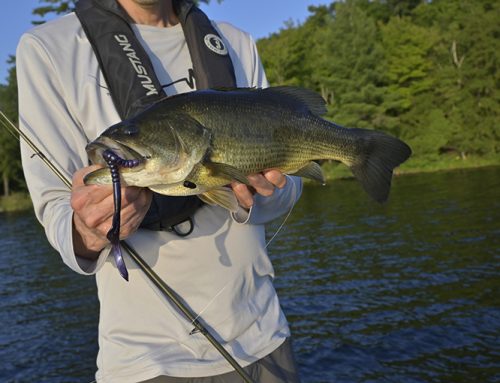
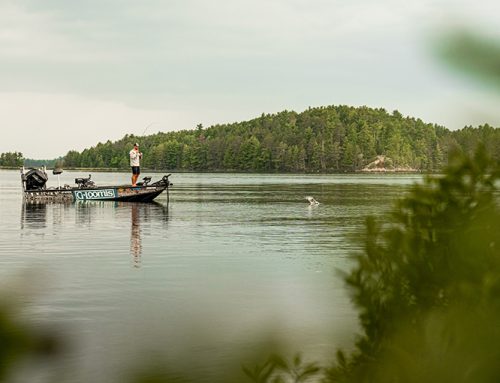
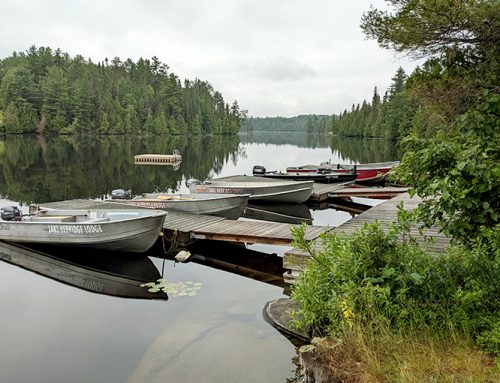
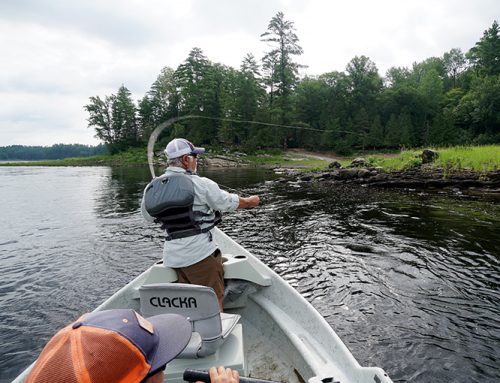
Leave A Comment